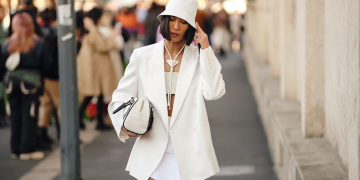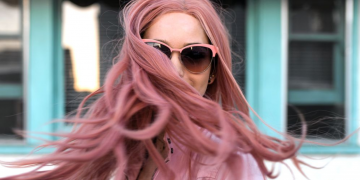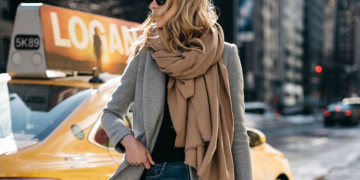The boom harkens back to the homes of the 1970s – the revival of vintage lace hanging planters is a bit of a giveaway. the 1970s loved the Victorian era, and the indoor plant boom is a throwback to that era. The widespread adoption of pro-nature design and architecture by environmentalists – with an emphasis on greenery, water, fresh air and natural materials and forms indoors – is fueling the phenomenon.
“Social media is driving this boom, and people who love plants are sharing photos of them everywhere,” says Hilton Carter, an American “plantfluencer” (gardening influencer) and author of the new book Living Wild.
“The fascination with houseplants stems from people wanting to reconnect with nature,” says Emma Sibley, founder of the London Terrariums store, which holds workshops to teach how to make glass containers – a trend that is also growing. -another aspect of the trend. “Throughout the lockdown, people were glued to their screens while working at home and couldn’t get into nature.”
Indoor plants meet people’s nurturing qualities, she tells BBC Culture: “They introduce a ritual in everyday life that takes people away from screening time and allows them to take care of the things that need them.” We spoke with several plant influencers to discover eight of the latest trends in styling houseplants.
1 Colorful plants
Tony Le-Britton, author of the new book Not Another Jungle-also the name of his plant store in Northampton, England, and his Instagram account-hybrid plants (plants with leaves of two or more colors) is one of the biggest trends right now. The range of color and pattern options continues to expand and can be paired with almost any room’s color scheme. “Just as the Netherlands bred the tulip in the 1600s, the Dutch government jumped at the chance to breed new varieties in plants,” he told BBC Culture. “The demand for houseplants soared during the embargo. Once houseplants got bitten by the bug, you wanted to know what else was available. People were searching online for more unusual plants that would have been of interest only to serious plant collectors. The diversity of plants is growing. While white and green ombré colors are still common, there are many variations of reds, pinks and oranges. People are now interested in buying plants that can be incorporated into a room’s color scheme, matching them to the paint colors and patterns in their interiors.”
2 Dark walls make plants stand out
One of Le-Britton’s favorite styling techniques is to place a wide variety of plants in dark, matte colors (such as midnight blue or forest green) against a wall, which allows the plants’ different forms and textures to stand out and their colors to appear more vibrant. These might include the distinctive bamboo, sometimes referred to as split-leaved ailanthus, a plant with glossy “windowed” leaves (the botanical term for perforated leaves). “This was very popular in the 1970s, and now it’s very popular again,” he says. “Today, their leaves appear again and again on wallpaper and decorative fabrics.” LeBreton also likes begonias, whose leaves have polka-dotted spots and vibrant red undersides. For even more color, he includes the versatile purple-leaved wisteria – which also includes climbers and trailing plants.
3 Glass containers and mossariums
A sub-trend of the indoor plant phenomenon is the glass container, which is characterized by low maintenance, eye-catching and aesthetic appeal. According to Sibley, “Sometimes too many houseplants can lead to panic about how to care for them. That’s where glass containers – the perfect blend of houseplants and decorations – come in handy. Glass containers require little to no care and can be left in the right conditions for months. No intervention time is required. This appeals to people who travel a lot and need friends and family to water their plants.” There’s even a trend now to use moss plants – glass containers containing moss, she says. Moss is in high demand, by the way. “People seem to be attracted to an all-green moss trend, which gives the space a really fresh feel.”
Lighting the plants with special lights helps them grow and creates an atmospheric atmosphere (Photo credit: Getty Images)
Lighting the plants with special lights helps them grow and creates an atmospheric atmosphere (Photo credit: Getty Images)
4 Plant lighting
A recent trend in indoor plants suggests a growing range of options for indoor plant lighting that are not only practical, but can produce a pleasing atmospheric effect. Plants need natural light to thrive, but in some spaces, such as darker corners, natural light is in short supply. A big trend now is to grow bulbs that compensate for natural light and trigger photosynthesis. These can be purchased from lighting stores and online retailers and can be used in regular fixtures, allowing plants to be placed anywhere. Glass containers can also be fitted with grow lights. le-Britton says, “Glass containers call for miniature worlds that people can mentally escape from, and illuminating them can enhance their magic.” “Another recent trend is the lamp-glass container hybrid. This is a lamp with a spherical glass base that doubles as a glass container and is lit by the lamp’s bulb. A recent post about this idea went viral on Instagram and the idea has garnered attention worldwide.”




























